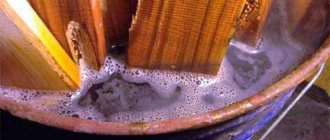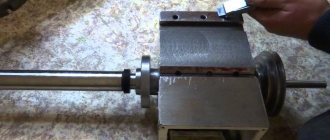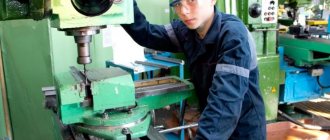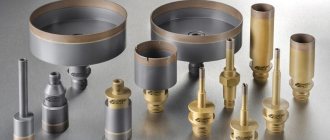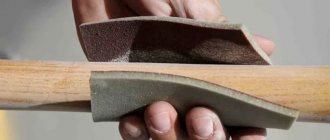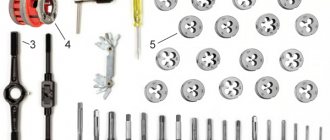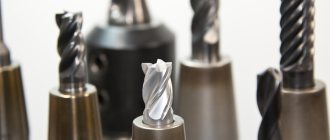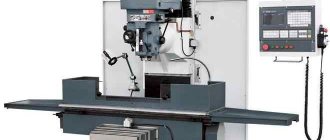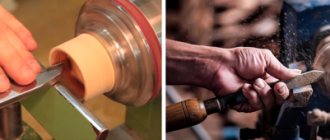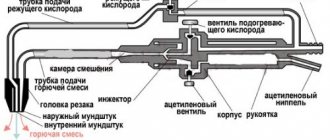- Passage shot blaster
- Suspended shot blaster
- Drum shot blaster
- Belt shot blaster
- Shot blaster for pipe cleaning
SHOT BLASTING CHAMBER is a device for processing and cleaning products and structures made of metal. Shot blasting chambers are made using modern technologies, using Russian and European components.
produces uninhabited and inhabited shot blasting chambers, walk-through and suspended designs at affordable prices.
Advantages and disadvantages of equipment
The advantages are:
- high performance;
- reduction of abrasive material consumption;
- ideal surface cleaning;
- the abrasive can be used repeatedly;
- the design is designed in such a way that the exhaust device removes all impurities and contaminants removed from the surface of the products;
- cleaning of workpieces of complex configuration.
The disadvantages include high costs at the equipment installation stage, as well as the complexity of installation.
DESCRIPTION OF THE CHAMBER AND ABRASIVE BLAST EQUIPMENT
WHAT IS INCLUDED:
1. Prefabricated abrasive blast chamber:
- The chamber is made in the form of a frame consisting of welded profiles attached to the foundation;
- Sandwich panels are attached to the walls and ceiling of the frame using self-tapping screws;
- The chamber is equipped with lighting, supply and exhaust ventilation diffusers, swing gates, and a door for service personnel;
- Swing gates and service door with viewing window.
- The floor of the chamber is made of welded lattice panels with a maximum load of 200 kg/m2.
2. Pressure abrasive blasting installation type DSG-200:
- Dosing valve for working with any abrasive material with a fraction of up to 3 mm;
- Nozzle holder DN-32 for a nozzle with a Venturi channel;
- Coupon kit;
- Remote control REMCON X with key and TWIN sleeve 20 m long;
- Oil-moisture separator filter CAF-3.
3. Operator protection kit:
- Protective helmet with cape;
- Air filter FV 120/240 for supplying air to the helmet;
- Air hose 9*15 mm, 20 meters long for supplying air for the operator’s breathing;
- Professional operator overalls with leggings.
Design features and operating principle
The installation is a special design, the metal wall panels of which are coated on the inside with noise-absorbing and abrasive-resistant material.
The device includes:
- shot blasting machine, which supplies a fixed amount of shot into the chamber;
- shot collection system;
- ventilation system (for habitable chambers);
- shock-resistant lighting equipment;
- transport system, thanks to which it is possible to install various lifting devices to increase worker mobility.
Depending on the equipment that the camera is equipped with, the following types are distinguished.
Inhabited and uninhabited
- The habitable chamber has become most widespread and involves human participation in the process of surface treatment.
- In an uninhabited chamber, a person is not in the shot blasting zone, monitoring the processing process through a special window.
Important!
Inhabited cameras are subject to high safety requirements. To avoid injury, the operator must be provided with special clothing and personal protective equipment during work in accordance with established standards.
Checkpoint
In pass-through type installations, roller conveyors (roller tables) are used, along which parts requiring processing are transported. In such devices, rolled sheets and profiles are cleaned (horizontal chambers), as well as metal structures and I-beams (vertical chambers).
Hanging
Using a special hook powered by an electric motor, the product is fed into the device for processing. Thanks to this principle, work operations can be performed from different sides.
Pressure type
Excellent for large volumes of work and intensive processing. The shot blasting pressure chamber is characterized by high productivity; during its operation, heavy abrasives (cast iron and steel shot) are used.
Shot blasting plant (equipment),
A pass-through type shot blasting machine ensures surface cleaning of simple welded metal structures and small sheet metal products. The installation can not only clean the surfaces of products from rust, scale, welding slag and burrs, but also relieve internal stresses caused by casting and heat treatment, which helps to increase the fatigue threshold, product strength and increase the adhesion ability of the varnished surface when painting.
Purpose:
removal of strong oxide films, scale, rust from rolled metal (sheet, I-beam, channel, angle, circle, forgings, etc.) before machining, welding and for cutting in a thermal cutting installation;
processing of metal structures that have the ability to move along roller conveyors (if necessary, additional devices in the form of support strips will be used) in order to remove burrs and scale on welds;
preparing parts and metal structures for painting;
cleaning of old paint and varnish coatings;
giving the metal surface a certain degree of roughness up to Ra 2-6.3.
Shot blasting machine operating mode:
Duration of work shift: 8 hours.
Number of work shifts per day: 2.
Number of work shifts per week: 5.
Number of working days per year: 253.
Technology advantage
- After computer 3D modeling, before dynamic shot blasting, the system determines the shape and size of the shot blast chamber and places the turbines in the desired position
- The machine has automatic fault detection means, adopts Switzerland+GF+ advanced production technology, has advanced structures, design, reliable operation, high production efficiency
- The shot blast turbines used significantly increase the efficiency and high quality of cleaning
- Adopted international, the most advanced BE full curtain type sand-shot separator, greatly enhance the separation effect
- Used efficient bag dust collector with increased filtration area
- Original appearance ensures ease of operation and maintenance
Specifications
Voltage and type of current of the supply network according to EN 60204-1 standard: 3×400 -5+10% V, 50 ±1%
Hz, typ TN-CS.
Degree of protection of electrical equipment (electrical cabinets, control panels, electric motors) according to GOST 14254-2015, no less than: IP54.
Sound levels and equivalent sound levels according to GOST 12.1.003-83 (GOST ISO 9612-2016):
Power consumption: 180 kW.
Cleaning class according to GOST R ISO 8501-1-2014: Sa-2½.
Chamber type: pass-through, with simultaneous top, bottom and four-sided side processing.
Loading and unloading of processed materials: workshop lifting mechanisms.
Maximum width of the processed product: 2100 mm.
Maximum height of the processed product: 1550 mm.
Maximum load on metal structures from processed products, not less than: 800 kg/m. linear.
Thickness of processed products: from 2 to 40 mm.
To process thin rolled sheets from 2, 0.3 mm shot is used. Overall dimensions of usable space:
Corresponds to the dimensions above the floor covering: LxWxH = 24000x7000x4900 mm.
Corresponds to the dimensions under the floor covering: LxWxH=24000x5000x1500 mm Turbines:
Quantity: 12 pcs.
Direct drive from an electric motor
Design: monodisc, with straight blades and fastening without the use of springs.
Turbine impeller diameter, 380 mm.
Material: tool steel, guaranteeing wear resistance of at least 3000 hours, for impeller blades, adjusting bushings, side, top and rear guards.
The ability to turn off each turbine individually to select the optimal operating mode, with the possibility of reverse operation.
The ability to adjust each turbine individually in terms of intensity and direction of abrasive flow, depending on the type of material being processed and the quality of surface treatment.
Conveyors:
Length of mechanized feeding conveyor: 7700 mm.
Length of the mechanized receiving conveyor: 7700 mm.
Speed of movement of products on conveyor roller tables: adjustable from 0.4 to at least 4 m/min, with drive and adjustment from one drive.
Output conveyor: equipped along its entire length with a mechanized system for collecting and returning abrasive material to the shot blasting unit
Internal protection: removable panels made of manganese steel (manganese content 12...14%) with a thickness of at least 8 mm, bolted.
Entrance and exit openings: four rows of double rubber curtains. Output section:
Rotating brushes made of wear-resistant, easily replaceable segments, equipped with a system for preventing collisions with the workpiece, a soft start system and a local control unit for the height of the brush; Blowing device for removing abrasive from treated surfaces with height adjustment by control unit.
Flat surfaces of a large area (creating resonant vibrations) must be equipped with vibration-absorbing and sound-absorbing materials to meet the requirements in accordance with paragraph 7.3. technical specifications.
Maximum single maximum permissible dust concentration: no more than 0.5 mg/m³, hazard class 3.
Service life before the first major overhaul: at least 7 years.
| SPECIFICATIONS: | ||||||
| № | Name | Options | ||||
| 1 | Window dimensions for LxH processing | 2300×1800 mm | ||||
| Workpiece dimensions LxH | 2100×1550 mm | |||||
| 2 | Roller table load | ≤1t/m | ||||
| 3 | Roller conveyor speed | 0.5~4.0m/min | ||||
| 4 | Rust removal quality class | GB8923-88 AB Sa2.5, partial Sa2.0 | ||||
| 5 | Abrasive materials (cast and crushed shot) | 0.8~1.2 | ||||
| 7 | Exhaust air emissions according to GBJ4-73 standard | ≤30 mg/m³ | ||||
| 8 | Content of harmful substances according to TJ36-79 standard | |||||
| 9 | Ventilation | ≥ 20000 m³/h | ||||
| 11 Total compressed air consumption | 1.0 m³/min | |||||
12 Dimensions:
| length: | 23000 mm | |||
| width: | 4600 mm | |||
| height: | 7200 mm | |||
| pit: | 2661 mm | |||
| Detailed Specifications: | ||||
| Shot blast turbine | 12 pcs. | |||
| Shot blasting volume: | 12 x 180 kg/min | |||
| Power: | 12 × 11kW | |||
| Bucket elevator (lifting volume): | 132 t/h, 11 kW | |||
| Separator (separation volume) | 132 t/h, 7.5 kW | |||
| Longitudinal screw (feed volume) | 132 t/h, 7.5 kW | |||
| Cross auger (feed volume) | 132 t/h, 5.5 kW | |||
| Shot collection auger (feed volume) | 30 t/h, 2.2 kW | |||
| Pneumatic Shot Valve | 400 kg/min | |||
| Shot blast chamber | ||||
| In the processing area: rolled protective steel, | 16mm | |||
| Roller tables in the chamber | ø108, L800mm | |||
| Speed control method | VFD | |||
| Load: | ≤1t/m | |||
| Transport speed: | 0.5~4.0m/min | |||
| Input and output roller conveyor | ø108, L800mm | |||
| Roller conveyor width | 2300 mm | |||
| Length of inlet and outlet conveyor | 7700 mm | |||
| Roller table load | ≤1t/m | |||
| Transport speed | 0.5~4.0m/min | |||
| Drive power | 3 kW, VFD | |||
| Explosion-proof dust container | ||||
| Ventilation | 20000 m³/h, 22 kW | |||
| general power | 180 kW | |||
PLC electrical control system, automatic control - frequency or manual control, automatic detection, automatic alarm, automatic shutdown, safe system interlock.
Abrasive materials for 8000 hours of equipment operation (steel shot (ISO11124), fraction 0.8…1.2 mm)
Characteristics of shot blasting chamber:
The cleaning speed through the VFD is 0.6-1.5 m/min (in accordance with the general degree of corrosion of parts and surface requirements). The empirical value can be adjusted according to the actual situation.
Roller feed speed 0.5-4.0 m/min. To achieve frequency regulation, customization is possible according to actual conditions.
A settling tank between the shot blasting chamber and the dust collector facilitates the recovery of shot. Annual shot savings of 5-6 tons.
Shot consumption is about 80-120 g/m².
Actual hardware configuration
Subject to abrasive loads, blaster parts are made of high chromium material, blade service life
The protective screen in the processing area is made of high-strength rolled steel. The one-piece skid plate is welded from the outside, without bolts.
Dust collector: bag dust collector, fan power 22 kW, dust removal efficiency up to 99.5%.
The PLC control device with touch screen, fully automatically measures and controls the operating time of the turbine and automatically reminds you to replace wear parts.
Solutions
Equipment safety is ensured by the use of protective screens on drives, warning signs of hazardous areas, and the use of bright colors.
Emergency stop panels are located in all hazardous areas and the electronic control panel.
Closed-loop safety system for shot feeding on a shot blast turbine
Main materials used
The armor of the shot blast chamber is hot-rolled steel 10-12 mm.
High quality shot blast turbine, made of high chromium steel,
Secondary separation device, drum screens from shot and dust to ensure efficiency and surface cleanliness.
Power elements
Compositions and features of shot blaster
The plant is composed of roller conveyor, front and rear sealing chamber, shot blast chamber, shot blast turbine assembly, dust collection system, and electric control system and shot circulation cleaning system, etc.
Transport Roller Conveyor
The transport system includes an input and output roller conveyor and a roller conveyor in the shot blast chamber. The total length of the conveyor system is 23 meters. The production line strictly synchronizes the roller system. All rollers have a VFD motor drive that supports a speed of 0.5 ~ 15 m/min. System capacity up to 1 t/m.
The input, intermediate and output roller shafts are made of high quality carbon steel seamless tubes with coated shaft journals.
Using computer dynamic modeling, the rollers in the shot blasting chamber completely eliminate the direct impact of shot and its rebound. In addition to the fact that all rollers are equipped with easily replaceable high-chromium high-resistant casings, both ends of the shaft axis use labyrinth sealing made of manganese steel high-resistant material, which completely eliminates abrasive wear of the bearings at both ends.
Next to each roller group there is a control panel that allows you to manually adjust the speed. With automatic control, the entire roller line is meshed with stepless speed adjustment; With manual control, each roller segment can be adjusted individually, which helps to adapt to the working rhythm, adjustment and maintenance of each roller segment.
Shot blasting chamber
The shot blasting chamber consists of a front sealed chamber, a shot blast chamber, a rear sealed chamber, a shot circulation system, and a dust collector system.
Front and rear sealed chambers
Multi-layer ring chain hermetic curtains and high-resistant rubber curtains are hung at the entrance and exit of the products. The suspended structure is easy to change and maintain. This device is hermetically sealed. The dust removal fan creates a certain vacuum in the vacuum chamber and eliminates the emission of dust.
The front and rear sealed cameras are protected by a screen.
Shot blast chamber
The shot blasting chamber is made of high-quality profiles and steel sheets, and has sufficient strength and rigidity. The chamber shape, size and installation position of the shot blast turbine are optimized using CAD and designed in dynamic simulation mode. This in turn provides a better shooting angle and distance, so that the products receive the best cleaning effect and the installation exhibits maximum efficiency.
The shot blast chamber body is completely protected from the inside by special wear-resistant plates (armor) made of manganese steel.
The one-piece skid plate is welded from the outside, without bolts. The lower auger is protected by a screen and has a long service life.
Shot blast turbine
This shot blasting machine has 12 turbines located at an angle, providing an optimal flow of shot onto the surfaces to be cleaned.
The shot blast turbine has high efficiency and is easy to install and repair. During rotation, the blades are pressed under the influence of centrifugal force. To remove the blades, just lightly hit the outside and it can be easily removed. It will take 10-20 minutes to remove all eight blades. At the same time, the wear condition of the guide cage and impeller can be checked.
Each shot blast turbine has 8 blades. The difference in weight of each blade is less than 3 grams.
The blade is made of high-chromium wear-resistant material and after processing the hardness is achieved on the order of HRC60-65. Which ensures a long service life.
The blades installed in the groove can be removed without tools, making the installation easier to maintain.
The control holder and distributor are made of high-chromium wear-resistant material, surface hardness HRC60-65.
Internal protective plates made of chromium alloys.
Impeller made of chromium structural alloy steel.
This shot blast turbine features high efficiency, low noise and low energy consumption.
Fraction circulation system
The shot circulation system consists of a spiral conveyor, a bucket elevator, a shot-sand separator, a shot feed controller and a shot pipe.
Spiral conveyor
The conveyor includes a gearbox, a spiral shaft, and a housing. This is a standard horizontal abrasive conveyor. It has high versatility, interchangeability, stable and reliable properties. The entire spiral conveyor is machined after welding to ensure concentricity. The internal and external surfaces are also processed using a special technology, which increases the service life and reduces noise.
Bucket elevator
The bucket elevator is composed of cycloidal gearbox, upper and lower drums, conveyor belt, hoppers, closed barrel, anti-reverse device and tension device, etc.
The bucket elevator is connected to a spiral conveyor (shot input) and a separator (shot output). The lift body is made of welded steel sheet. The inspection hatch is located in the housing for maintenance and changing buckets. For comfort, a door is located in the lower part of the body for repairs and to prevent clogging with shot.
To avoid slipping of the conveyor belt, the drum consists of original perforation. This design not only improves the friction force by avoiding slipping, but also reduces tension when lifting the belt, and also extends its service life.
A pulse sensor is installed on the lower shaft of the elevator, taking readings and ensuring the working condition of the elevator. When the lower shaft drive stops, the PLC immediately outputs a fault signal and generates information, giving an alarm to ensure the safety of the equipment.
Shot-sand separator
The separator is one of the key components of the equipment, the size of the separation zone directly affects the separation effect significantly. This BE separator is a full curtain type, manufactured using the latest technology. It includes screening areas, a shot hopper, a controlled shot valve, etc.
With a high separation effect, providing an increased service life of the gun nozzle and reducing maintenance costs.
Principle of operation:
When the separator is operating, a spiral conveyor transports the shot and sand mixture that comes from the bucket elevator to a reserve port at the end of the separator. The stream of fractions begins to overwhelm.
Under sealing condition, under the influence of gravity, the dust suction fan effectively separates shot, metal oxide debris, broken shot and dust. The sieve blocks large waste, small shot and dust that enter the waste outlet, the selected shot is again sent to the shot hopper for further use. The separation efficiency of the separator is at least 99.5%.
Dust collection system
The dust collection system consists of a baghouse dust collector, an exhaust fan and connecting piping between the dust collector and the fan. The installation implements a three-stage dust removal mode. The first-stage dust collector is the settling chamber. The settling chamber is based on the aerodynamic principle. This allows for efficient separation of shot without loss of pressure. The purpose of this unit is to solve the problem of accumulative sand in the pipeline.
The second stage of the dust collector is based on inertial dust removal. Its purpose is to separate large particles, increasing the service life of the filter material.
The third stage of the dust collector is a highly efficient bag filter. It uses pulse backflow system technology, with low filtration speed, high precision and backflow. Which gives a good dust cleaning effect.
Dust removal efficiency is above 99.9%. Dust emissions in the exhaust gas are no more than 30 mg/m³, in accordance. Exhaust gas generated during operation may be discharged into the atmosphere after processing the dust collector. This filter uses a 22 kW fan, total ventilation 20,000 m³.
The service life of the filter element is at least 3 years.
Shot collection systems
To reduce the cost of cleaning, during or after processing it is necessary to collect steel or cast iron shots, clean them of dust and impurities, accumulate them in a special device and reload them into shot blasting machines.
The used fraction can be collected:
- manually using special vacuum equipment (usually at the end of the work shift). This method is inconvenient, as productivity decreases and additional time must be allocated;
- using a scraper floor operating in automatic mode. The spent abrasive is collected directly during the cleaning process. The advantage is that there are no breaks in work to remove the shot.
GENERAL DESCRIPTION OF THE KDO SET
What is the KDO camera made of?
The chamber is assembled from steel profile structures and sandwich panels. The internal surfaces of the camera are protected by wear-resistant rubber sheets.
How does a KDO camera work?
The abrasive blasting operator processes the product while standing on a grated floor (flooring). The spent abrasive passes through the grating onto the scraper conveyors. The abrasive collected by the longitudinal conveyors is supplied to the transverse conveyor.
How is abrasive cleaned?
Using a bucket elevator, the collected abrasive enters the pneumatic blowing separator, where the abrasive cleaning process takes place. Then the abrasive material enters the storage tank (hopper) with distribution to 1 pressure unit.
The separator is connected by an air duct to a self-cleaning filter. The filter effectively cleans the air coming from the working chamber and separator and supplies purified air to the workshop.
General characteristics
| Camera type | Dead end |
| Dimensions, m | 3.2x2.4x3.5 (LxWxH) |
| Gates | Swing |
| Abrasive used | metal abrasive materials up to 3 mm fraction |
| Abrasive blasting equipment | DSG-200 installation with remote control |
| Horizontal abrasive transport system | automatic: slatted floor with an area of 7.68 m2; longitudinal scraper conveyors 2 pcs. 4.2 m each; cross scraper conveyor 1 pc. 3.4 m; |
| Vertical abrasive transport system | automatic: bucket elevator |
| Abrasive material return and cleaning system | pneumatic blowing separation system |
| Ventilation dust collection equipment | KOMAX filter |
| PPE for the operator | Overalls with leggings, helmet, breathing filter |
Principle of work
Processing of metal parts in a shot blasting chamber is carried out by the impact of solid or crushed shot on the surface of the product. Under pressure at high speed, the shot flies out of the shot blasting machine and collides with the surface that requires processing. As a result, a protective layer is created. The size of the shot is selected according to the task at hand and depends on the required impact force.
Inhabited shot blasting chamber
The inhabited shot blasting chamber is used to clean welded metal structures from dirt, scale, rust and other surface contaminants.
Processing is done manually by an operator who is in a closed chamber. Directing a stream of abrasive (shot) accelerated by compressed air onto the surface to be cleaned, which gives the surface a relatively rough, uniformly distributed metallic sheen. Manual shot blasting chamber improves the appearance of welded metal structures, and also increases the quality of subsequent priming, painting and corrosion protection.
Safety precautions
The operation of the installation must be carried out by personnel who have undergone labor safety training, who are proficient in working with the required equipment, who have the appropriate qualifications and permission to work.
The camera must provide:
- complete isolation of the work area;
- preventing body parts from getting into gaps or parts of equipment;
- fences that prevent the shot from flying out of the chamber space;
- blocking doors, movable partitions, if it is possible to open or remove them without special devices;
- lighting sufficient to determine the location of the door during heavy dust conditions;
- eliminating the possibility of starting shot blasting equipment when the door to the chamber is not closed;
- interlocks preventing personnel from entering the chamber space during product processing.
The entry and exit points for workpieces from the workspace must be inaccessible to unauthorized persons. Personnel at the entrance and exit of the installation must wear personal protective equipment. The device, which uses manual shot blasting, is equipped with an observation window to monitor the work inside the chamber. The window must be impact-resistant and prevent shot from flying out, and the transparency of the glass must be maintained.
What is shot blasting?
Shot blasting is a special technology for processing metal surfaces, which involves the impact of small particle particles on the metal. To influence a metal surface, special spray installations are used, the principle of which is to accelerate particle pellets under the influence of compressed air. From a physical point of view, shot blasting surfaces looks like this:
- Small pellets are inserted into a special sprayer; at the initial stage, their kinetic energy is zero.
- When the device is started, the pellet particles fall under a stream of compressed air, which imparts greater kinetic energy to the pellets - this leads to serious acceleration of the particles.
- Under the influence of a jet of compressed air, particles fly out of the spray gun at high speed and hit the metal surface.
- If there are any foreign particles on the surface of a metal object (dirt, dust, debris, rust, scale, etc.), then the pellets impart a large amount of kinetic energy to such particles.
- This leads to the fact that, due to excess kinetic energy, foreign particles fly off the surface, which leads to cleaning of the metal (the metal itself, if all the rules are followed, does not deform, since it has increased strength).
- It should be taken into account that pellet particles during processing can either retain their shape or become deformed or destroyed (in whole or in part) - it all depends on the physical properties of the pellets.
What does the price consist of?
The shot blasting chamber is manufactured according to an individual project and depends on the specific requirements of the customer. Its price is determined as a result of a thorough analysis of the location and the tasks that need to be solved by the consumer. For specific operating conditions, the chamber can be equipped with shot blasting elements of various price categories, which will significantly affect its final cost.
Automatic cameras equipped with modern robotic installations will be much more expensive than devices of the same size, but the design of which includes a small set of shot blasting equipment with manual collection of abrasive. Today, using a shot blasting chamber to clean metal surfaces is the optimal and cost-effective way to prepare products for further use.
How to buy a complex for shot blasting large parts and abrasive cleaning
Please note that the price on the website is not a public offer and is valid as of 08/08/2021. To clarify the current cost of the kit and its elements, contact our manager.
We will send you a detailed commercial offer with the current price and technical characteristics of the equipment.
We work on an application system. If you need a complex for cleaning parts, call us by phone or email us. We will advise you on all issues of purchase, delivery and installation.
Process description
There are two models of shot blasting - manual and automatic. In the first case, all work is done manually using special sprayers. In the second case, a special shot blasting chamber is used, where everything is automated - workers only clean up problematic fragments (with severe corrosion, with large deposits). Below we will look at these methods in more detail.
Manual metal processing
This method is excellent for processing small batches of metal that has a complex shape). A special shot blasting machine is used, which is connected to an electric compressor. It generates pressurized air, which pushes the particle particles out of the spraying apparatus. The procedure itself looks quite simple:
- Several workers wear special protective suits that help filter the air or contain their own oxygen supply (producing large amounts of pellets that can be inhaled). The work must be carried out in a workshop where favorable conditions for cleaning have been created (low humidity, good ventilation).
- They then connect the shot blasters to the compressor, place the metal objects on supports and perform the blasting. The duration of the work depends on the nature of the damage to the metal, the type of alloy, and so on.
- After processing, workers leave the workshop so that particles of metal and dust can settle. After this, using special liquids, wash off the dust particles that have settled on the metal during storage.
Automatic cameras
Also widely used is the shot blasting chamber, which operates in automatic mode. There are large fixed installations on sale that operate on the principle of a conveyor. You can also buy small compact installation platforms that can be transported if necessary. Shot blasting chambers are an excellent option for quickly cleaning large batches of metal with simple shapes (sheets, beams).
Shot blasting machine
It works like this:
- A worker places a metal object into a shot blasting machine. Please note that almost all installations are isolated. There is no need to wear a special protective suit, which greatly simplifies its work.
- After placing the part, a person starts the shot blasting chamber, to which devices that spray abrasive shot are connected from the inside. The principle of operation here is standard - all spray units are connected to an industrial compressor, which uses compressed air to accelerate the particle particles.
- During operation, the participation of an operator may be required to control the parameters of the procedure. He will also monitor the state of technical parameters - the state of ventilation, the quality of cleaning. Please note that in some cases the participating installation operates completely offline.
- Upon completion of cleaning, the worker must check the external condition of the part. If cleaning is poor, the operator can place the metal object in the machine for another cycle.
- It happens that the cleaning went well except for some hard-to-reach places. Then the worker can complete the work manually.
Principle of workpiece placement
Shot blasting machines can also be classified according to the principle of loading workpieces. To place blanks the following can be used:
- Fixed table
- Rotary table
- Hook hangers
The type of workpieces being processed, as well as the nature of shot blasting itself, depends on the loading principle.
- A fixed table is most often used to place fairly large workpieces. In this type, the abrasive suspension supply nozzles are located on different sides of the table. Additionally, a fixed table can also be located in habitable chambers. That is, the operator himself walks around the workpiece and cleans problem surfaces.
- The movable table is used in shot blasting machines with a one-sided nozzle. As processing progresses, the operator needs to rotate the table using the control panel, allowing access to still untreated surfaces.
Tables have one significant drawback. The surface on which the workpiece rests is not treated with abrasive. In this case, you need to stop the processing process and turn the workpiece over. Rigging operations take up valuable time.
- Hooks make it possible to hang the workpiece, which provides access to all processed surfaces. In the case of a table, the shot does not have access to the supporting surface. Hook hangers are often used for cleaning small and medium-sized workpieces. But there are also exceptions.
Design
Each shot blasting chamber is actually an individual project (assembled on a turnkey basis). Even though they all have a so-called basic set of components necessary for operation. It includes: a camera body, a metal structure supply system, shot blasting machines, dust collectors, abrasive cleaning systems, a muffler and other components. And all because the size of the chamber is determined based on the maximum dimensions of the products being cleaned. Which, in turn, determines what abrasive units the shot blasting chamber will ultimately be equipped with. Steel (cast iron) crushed shot is most often used as an abrasive, providing the highest quality of cleaning. At the same time, it can be easily regenerated, that is, it is intended for reusable use.
The walls of the cell are usually made of brick or similar materials (if it is a large, stationary cell) or metal (if it is not very large or mobile). To reduce wear, the inside is sheathed with reinforced rubber sheets, plywood or rubberized fabric with a thickness of 6 to 12 mm (without overlapping spaces) using special fasteners. Lamps are usually used with special shockproof glass. But the fan of the chamber ventilation system must be equipped with a muffler. The fact is that the speed of air flow is almost equal to the speed of sound and the noise produced reaches 90 db. With a muffler it drops to 68-75 db.
